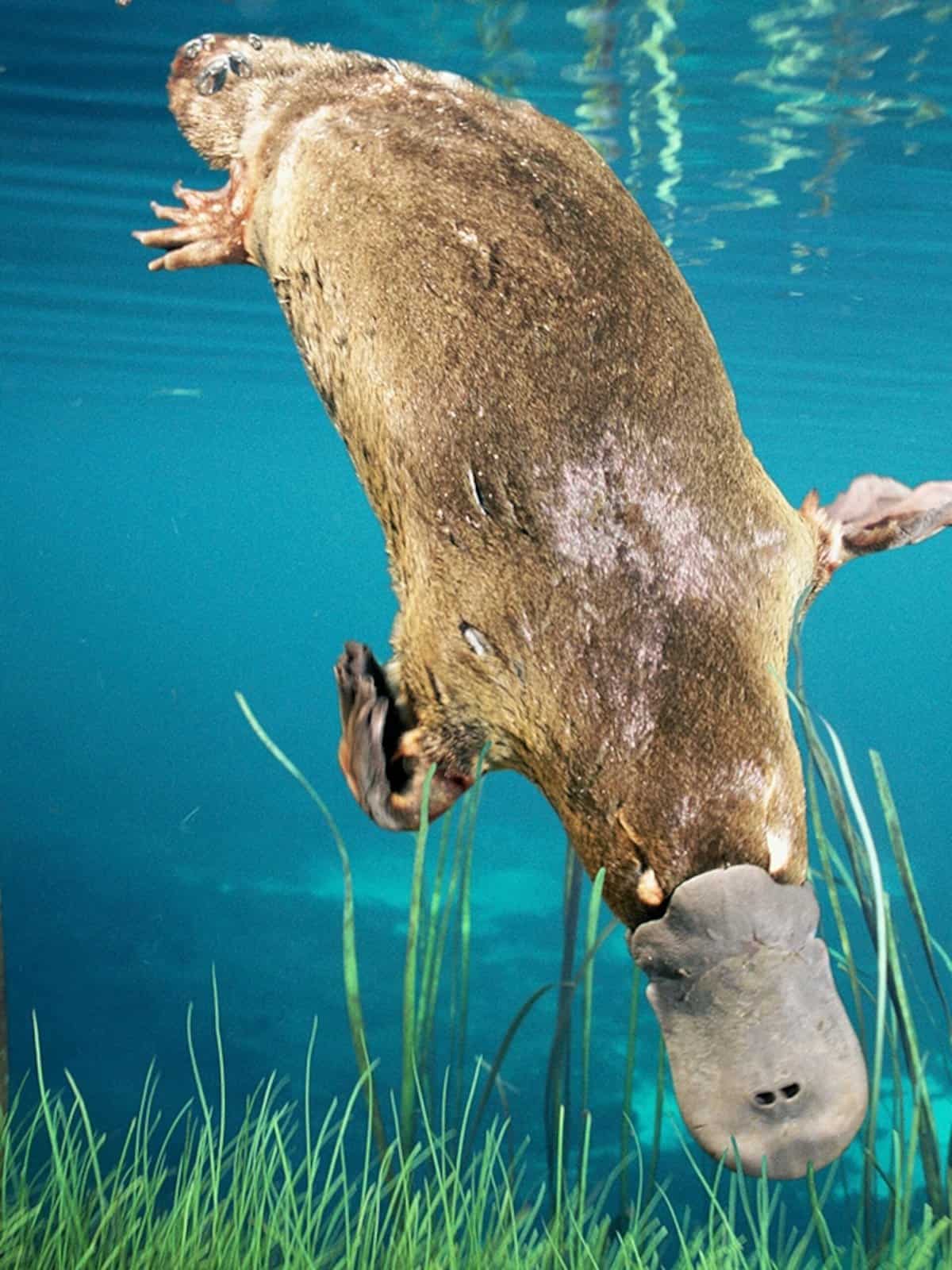The Playful Platypus: An Ultimate Guide for Curious Parents
Hey there, awesome parents! Are you ready to embark on an exciting adventure to learn about one of Mother Nature’s most remarkable creations? Yes, we’re talking about the amazing platypus! This enigmatic little creature has puzzled scientists and delighted animal lovers for years, and it’s time we dived nose-first into the world of the platypus. Welcome to ‘The Playful Platypus: An Ultimate Guide for Curious Parents’ – your go-to resource for all things platypus! ?
Known for its odd combination of features – like having a bill similar to a duck, a tail like a beaver, and webbed feet akin to an otter – the platypus is definitely a fascinating topic for family discussions. Not only is it a wonderful way to spark the curiosity of your little ones, but it’s also an opportunity to teach them about the importance of biodiversity and conservation. Without further ado, let’s dive into the extraordinary life of the platypus!
What’s a Platypus Anyway?
First things first, let’s clear up any confusion about what a platypus is. The platypus, or Ornithorhynchus anatinus if you want to sound super sciency, is a semi-aquatic mammal that is one of the only two mammals known to lay eggs instead of giving birth to live young – they’re a part of a special group called monotremes. Pretty cool, right?
Habitat and Where to Find Platypuses
Platypuses are native to Australia, so if you’re down under or planning an adventurous trip there, you’re in luck! These incredible creatures make their homes in freshwater environments such as rivers, lakes, and streams, primarily in the eastern states of Australia and Tasmania. Platypuses are a bit shy, so finding one may be a bit challenging, but oh so rewarding!
The Platypus Bill: Not Just for Show
Perhaps the most distinctive feature of the platypus is its duck-like bill. But, this bill is so much more than just a quirky feature; it’s an incredible sensory organ! It’s packed with electroreceptors that allow the platypus to detect the electric fields generated by the muscle contractions of their prey. When the platypus dives underwater to forage, it closes its eyes, ears, and nose, and navigates and hunts using its super-powered bill alone.
A Platypus’s Diet: What’s for Dinner?
Speaking of hunting, you might wonder what’s on the menu for these egg-laying mammals. Platypuses love to feast on aquatic invertebrates like insect larvae, freshwater shrimps, and crayfish. They’re excellent swimmers and use their webbed feet to paddle through the water or dig through the mud to find a tasty snack.
Did You Know? Platypus Fun Facts!
- Electric Hunter: We’ve touched on this, but it’s so cool we have to say it again! Platypuses hunt using electrolocation – detecting electrical signals from living creatures. Pretty electrifying stuff!
- Mysterious Mammals: The platypus is one of the few venomous mammals! The males have a spur on their hind foot that can deliver a venom capable of causing severe pain to humans.
- Unique Family Life: Mama platypus lays one to three eggs and keeps them warm by curling around them. Platypus babies are born with teeth, but they don’t keep them as adults. Instead, they have tough gum pads to mash up their food.
Embarking on a platypus learning journey with your children is not only enjoyable but also very educational. These quirky creatures are a fantastic way to introduce various scientific concepts, from evolution to animal behavior. Plus, it’s a great chance to instill a love of nature and a passion for wildlife conservation in young minds.
Stay tuned as we continue to explore more about these mysterious creatures in the second part of ‘The Playful Platypus: An Ultimate Guide for Curious Parents’. We’ll take a closer look at the life cycle of the platypus, conservation efforts, and how we can help protect these unique animals for future generations to enjoy. So, grab your explorer’s hat and join us on this amazing platypus adventure! ??
Remember, every creature has a story, and the platypus surely has a tale that is intriguing, educational, and full of surprises. Prepare to be wowed by more platypus wonders in our next installment!

Five Things Parents Should Know In Preparing for Platypus Encounters
1. Understand Platypus Behavior and Environment
Before setting out with your family to catch a glimpse of the elusive platypus, it’s important to understand their natural habits. Platypuses are most active during dawn and dusk – times known as ‘crepuscular’ – which means you’ll have a better chance of spotting one if you venture out during these periods. They also love serene, undisturbed waterways, so look for quiet spots away from bustling activity.
2. Teach Respect for Wildlife
When introducing your children to wild animals like the platypus, it’s crucial to instill a sense of respect for their environment. Make sure to keep a safe distance, avoid loud noises, and never attempt to touch or feed a platypus. This respect ensures that the animals feel secure in their habitat and that your family has a safe and rewarding experience.
3. Spotting a Platypus Requires Patience
Seeing a platypus in the wild can be a bit of a waiting game. Prepare your little adventurers for the possibility of a long wait by bringing along snacks, water, and some quiet activities to keep them engaged. Patience is key, but the payoff of seeing a platypus glide through the water is absolutely magical!
4. Safety First: Be Aware of Potential Dangers
As cuddly as platypuses may look, it’s important to remember they are wild animals. Male platypuses have venomous spurs that can inflict painful wounds. While they are not typically aggressive towards humans, it’s best to admire them from a safe distance. Additionally, always supervise children near water and be prepared for changing weather conditions when exploring their habitat.
5. Cultivate a Conservation Mindset
Witnessing a platypus in its natural setting presents a wonderful opportunity to talk to your kids about conservation and the role we all play in protecting ecosystems. Discuss threats such as pollution, habitat destruction, and climate change, and encourage actions like picking up litter and supporting wildlife protection initiatives. Turning your platypus excursion into a conservation lesson will foster a lifelong regard for nature within your family.
Continuing Your Platypus Adventure
With bellies full of curiosity and hearts set on conservation, your family is ready to encounter one of nature’s most unique treasures. A platypus watching excursion is more than just a fun day out; it’s an educational expedition that can bring your family closer to the wild wonders of our world.
Learning about platypuses can inspire a multitude of discussions and activities – from crafting platypus masks and drawing their riverbank burrows to deeper research projects or even adopting a platypus through a wildlife foundation. So, as you prepare for this fascinating encounter, think of it as the beginning of a bigger journey towards understanding and safeguarding the natural world. Go forth, intrepid explorers, and may your adventures be filled with joy and wonder!
Keep in mind this guide is just the start. Our planet hosts a kaleidoscope of creatures, each with its own story and place in the ecosystem. After you’ve discovered the platypus, who knows what your next family adventure might be? Until then, let the playful spirit of the platypus guide your journey into the fascinating world of wildlife.
By equipping yourselves with respect, patience, and a conservationist viewpoint, you’re all set for an unforgettable platypus rendezvous. Here’s to making cherished memories in the wild and nurturing the next generation of nature’s guardians!
For more great fun click here. For more information see here
Disclaimer
The articles available via our website provide general information only and we strongly urge readers to exercise caution and conduct their own thorough research and fact-checking. The information presented should not be taken as absolute truth, and, to the maximum extent permitted by law, we will not be held liable for any inaccuracies or errors in the content. It is essential for individuals to independently verify and validate the information before making any decisions or taking any actions based on the articles.




